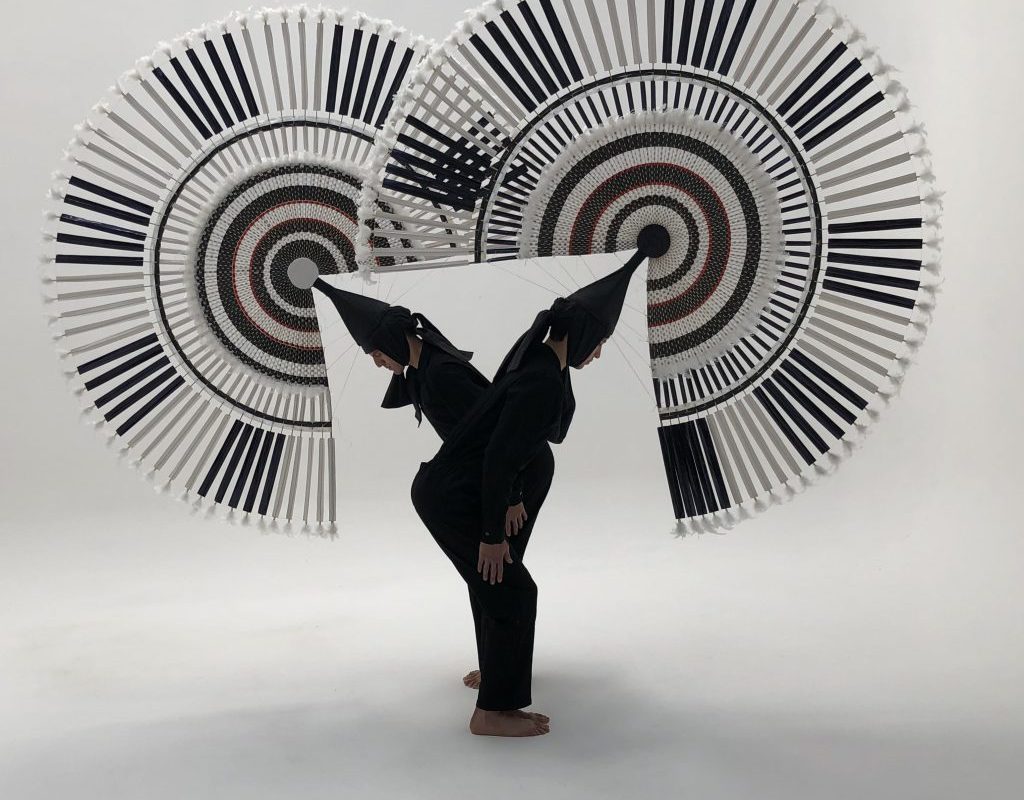
Reverencia
Data Sheet
Credits
DETALLES DEL PROYECTO
Choreographic action based on a reinterpretation of the Dance of the Quetzals, one of the few pre-Hispanic ceremonial dances that survived evangelization in Mesoamerica and is still performed in the Nahua-Totonaca region of Mexico. The piece proposes a synthesis of the dance, focusing on specific movements: the greeting to the four cardinal points and the essential gesture of gratitude underlying the reverence performed by the two dancers. Of the original colors of the plumes, only white, black and a red line remain, alluding to blood and life.
Reverencia is part of a broad project to recover and reread traditional dances of pre-Hispanic and colonial origin based on the analysis of the narrative, symbolic, sound and choreographic parts that compose them.
The Dance of the Quetzales is one of the few ceremonial dances that has survived the evangelizing crusade in Mesoamerica and is still performed in the Nahua-Totonac region located between the Mexican states of Puebla and Veracruz. The dancers honor the sun and ask for divine favors such as good weather, abundant harvest and health since the purpose of the dance is to benefit agricultural work. The core of the dance is made up of greetings to the four winds that protect the peasants from the elements. It is a solemn dance that develops around parallel and crossed lines of movements of stomping, turning and bowing. The ceremonial headdress have various symbologies in their colors and patterns. In this piece, those symbols and movements were modified to focus on the essential gesture of respect, gratitude, and hope underlying on the reverence.
The piece responds to Candiani’s interest in the preservation of memory through the rescue and reinterpretation of traditions, rituals, materials and clothing, and is linked to the concept of the 2019 edition of The Armory Show, curated by Sally Tallant, where the starting point curatorial was the commemoration of the 80th anniversary of the 1939 New York world fair, so this project also establishes a historical connection with the way in which Mexican governments presented the image of Mexico at world fairs, building a national imaginary through through the representation of traditional dances and regional “stylized” clothing.
The video is presented along with prints of the choreographic score of the dance (the instructions of the movements of the body) and video stills of the precise moments of coincidence between the two dancers.
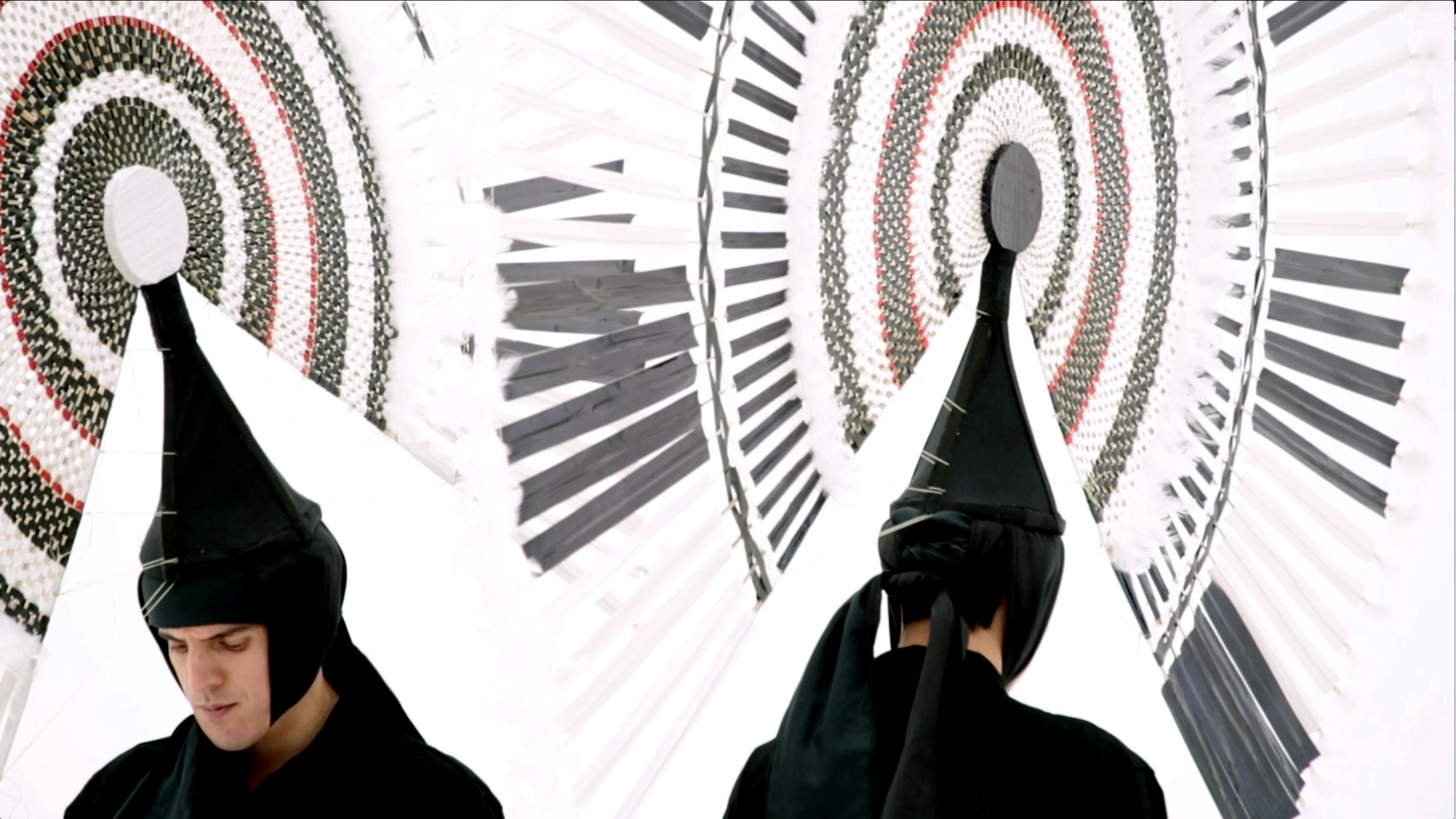
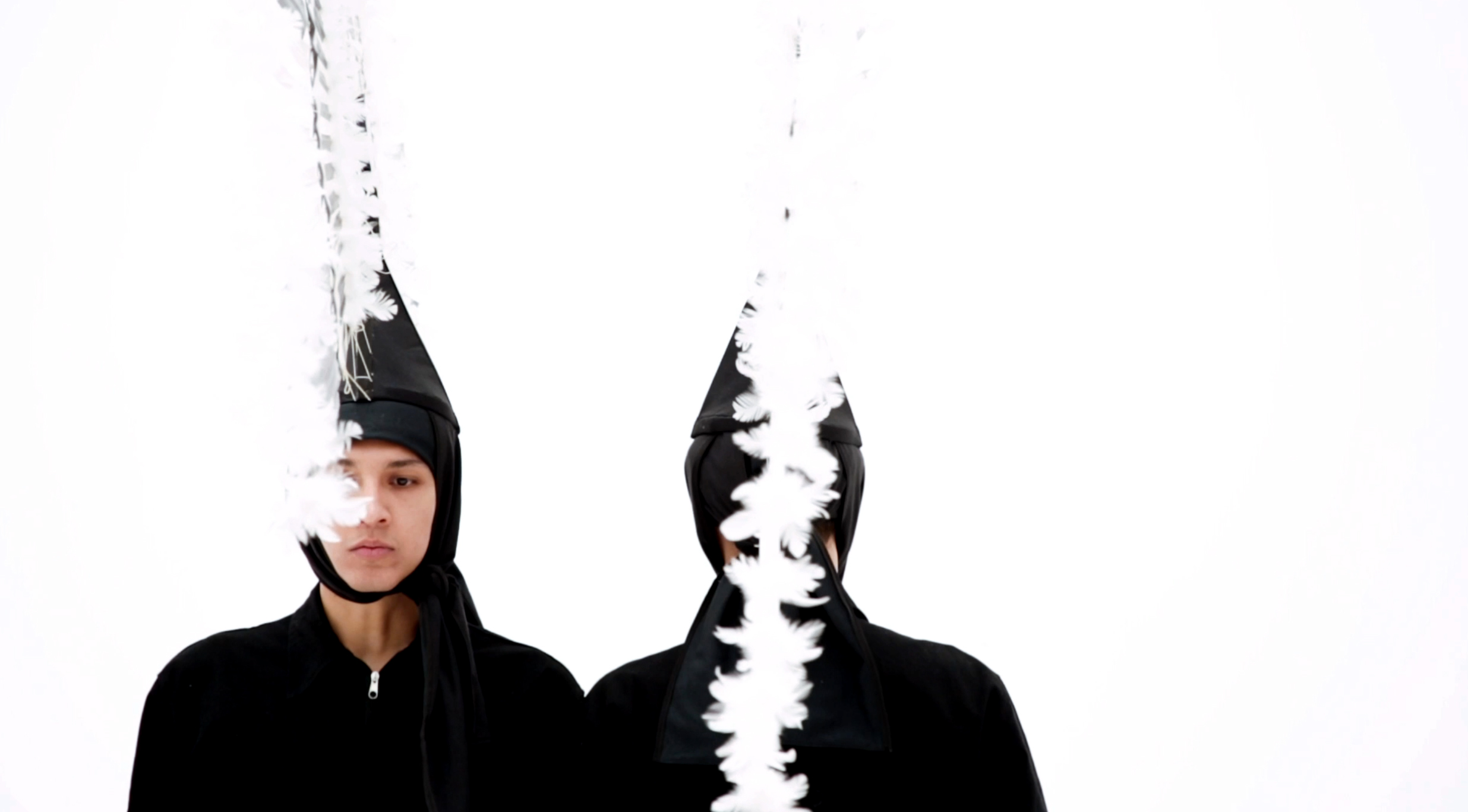
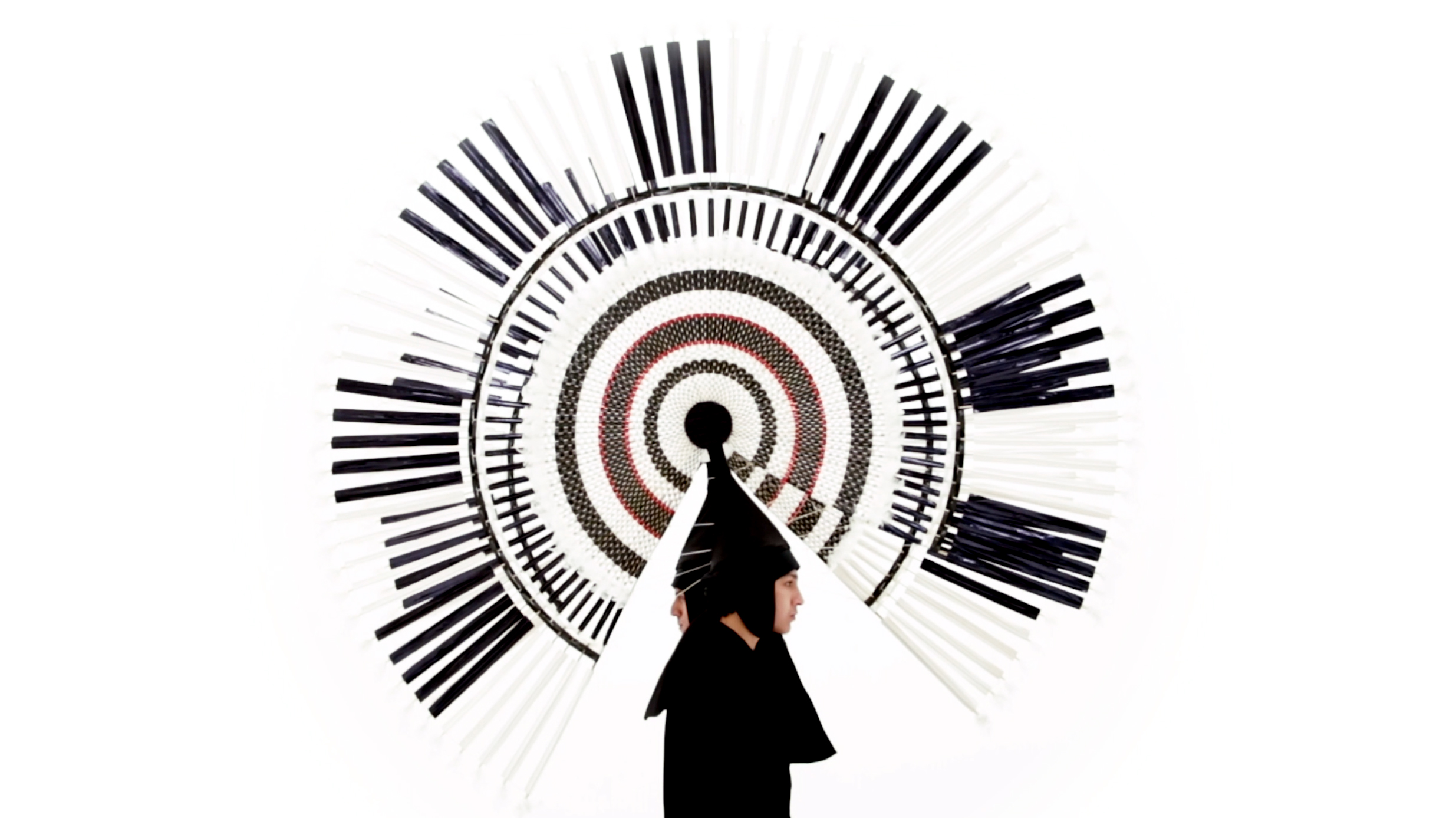
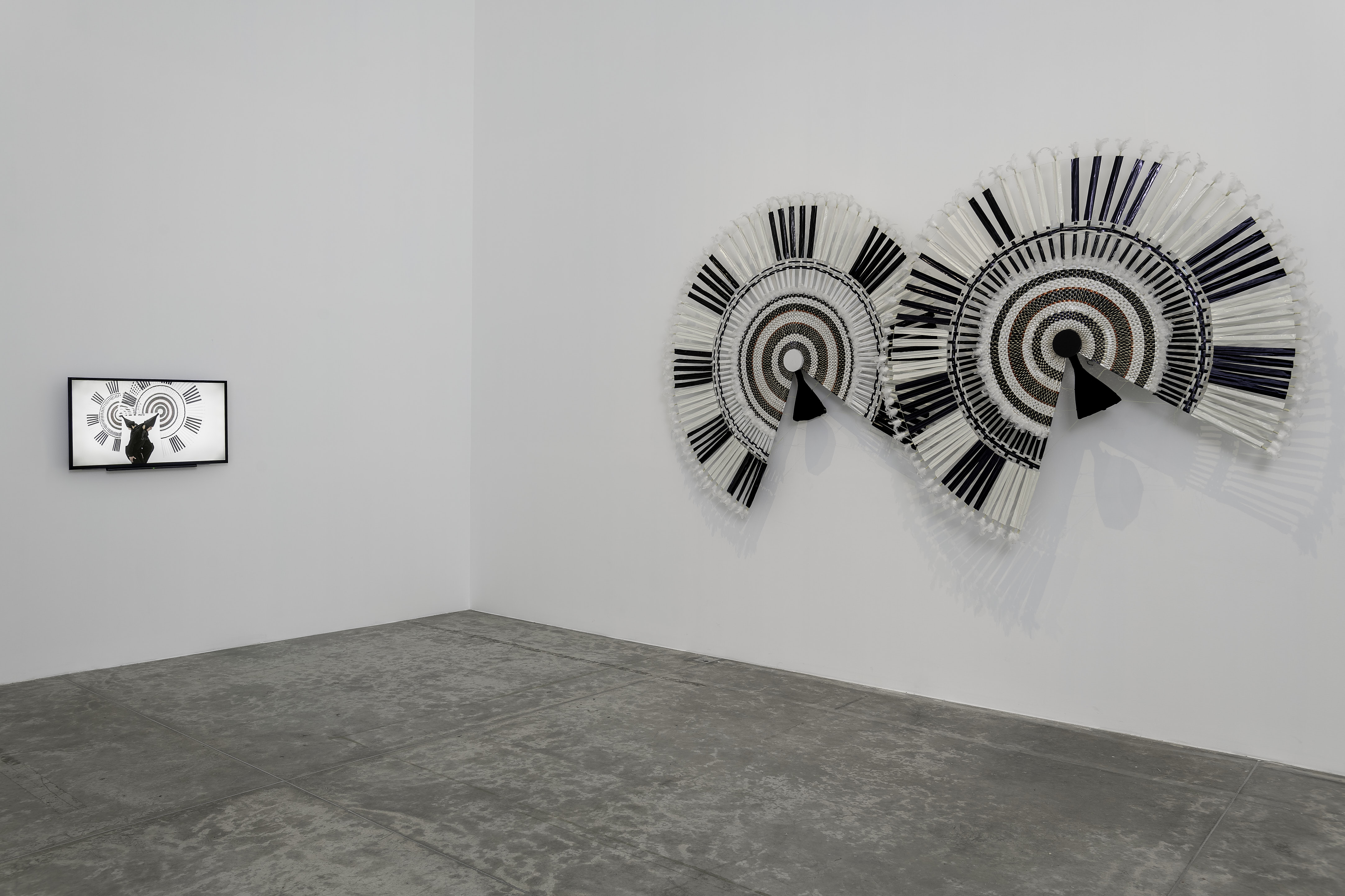
DETALLES DEL PROYECTO
DETALLES DEL PROYECTO
DETALLES DEL PROYECTO
DETALLES DEL PROYECTO
DETALLES DEL PROYECTO
DETALLES DEL PROYECTO